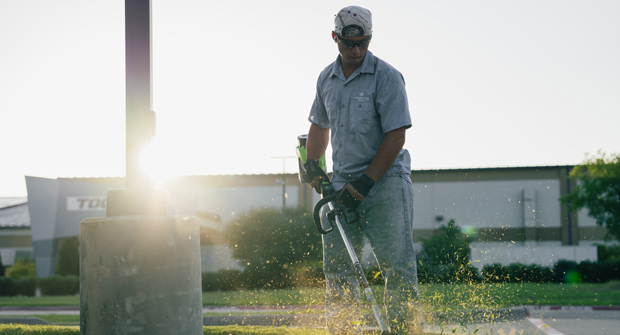Pre-emergent programs set LCOs up for success
As the demand for lawn care continues to increase in the post-COVID marketplace, so have the uncertainties surrounding these services. With the labor shortage, increased product costs and decreased product availability, operators are still tasked with delivering high-quality lawn results.
That’s why many LCOs turn to pre-emergent programs to set themselves up for success, says Gilbert Del Rosario, T&O district sales leader and market development specialist, Corteva Agriscience.

“Traditionally, they rely on hand weeding or glyphosate in the landscape setting. But there’s a labor shortage, and that product is proving difficult to get now,” Del Rosario says. “A pre-emergent program allows them to control weeds and customer needs without the uncertainty of postemergent herbicide supply or labor during the summer months.”
Pre-emergents prevent weed growth before it becomes an issue. They can complete the application prior to the busy season, which gives them a larger application window to account for possible weather interruptions.
“Pre-emergents allow for versatility and flexibility of application for lawn care operators and also minimize the need for post-emergents,” Del Rosario says. “The program demonstrates early that their service meets the customers’ needs for healthy, weed-free turf from the get-go, reducing complaints and callbacks.”
Before adding the program, LCOs need to know the type of turf and weed spectrums in their area to determine the best products and application timeframe. Soil temperatures and plants, like forsythia, with similar bloom times to when the weeds emerge can be used as indicators for when it’s time to make an application.
Mistakes to avoid
To ensure the pre-emergent program is successful, operators shouldn’t miss the application window. “Pre-emergent herbicides need to go down before the weeds emerge,” he says. “If not, it could result in pre-emergent failure because it was applied too late.”
Operators should also read the use directions on the product label limitations—like use rates needed for application—to stay within those parameters. Using too low of a rate in an attempt to save money or not properly calibrating could result in not having enough residual control to get the turf through the season—leading to LCOs spending more money later to fix the weed breakthrough.
“They should calibrate their use rate to the average spray volumes each technician applies per acre to assure the optimum product performance.” Del Rosario says.
Find pre-emergent support
Corteva Agriscience offers an extensive product lineup to use in a pre-emergent program. For pre-emergent control of crabgrass and other grassy weeds, Dimension® specialty herbicide provides a long application window from early to midseason. Gallery® specialty herbicide treats more than 90 broadleaf weeds. Combining the power of Dimension and Gallery into a granule formulation, Crew® specialty herbicide offers a two-in-one solution for turfgrasses and landscape beds and is safe on warm- and cool-season turfs.
Corteva T&O territory managers also provide calibration seminars, assistance identifying weeds, technical training and guidance on how to properly use the products. Educating themselves and their clients creates a solid foundation for an operator’s success with a pre-emergent program.
“LCOs can set themselves apart from the competition because they can achieve turf uniformity at the beginning of the year,” Del Rosario says.


